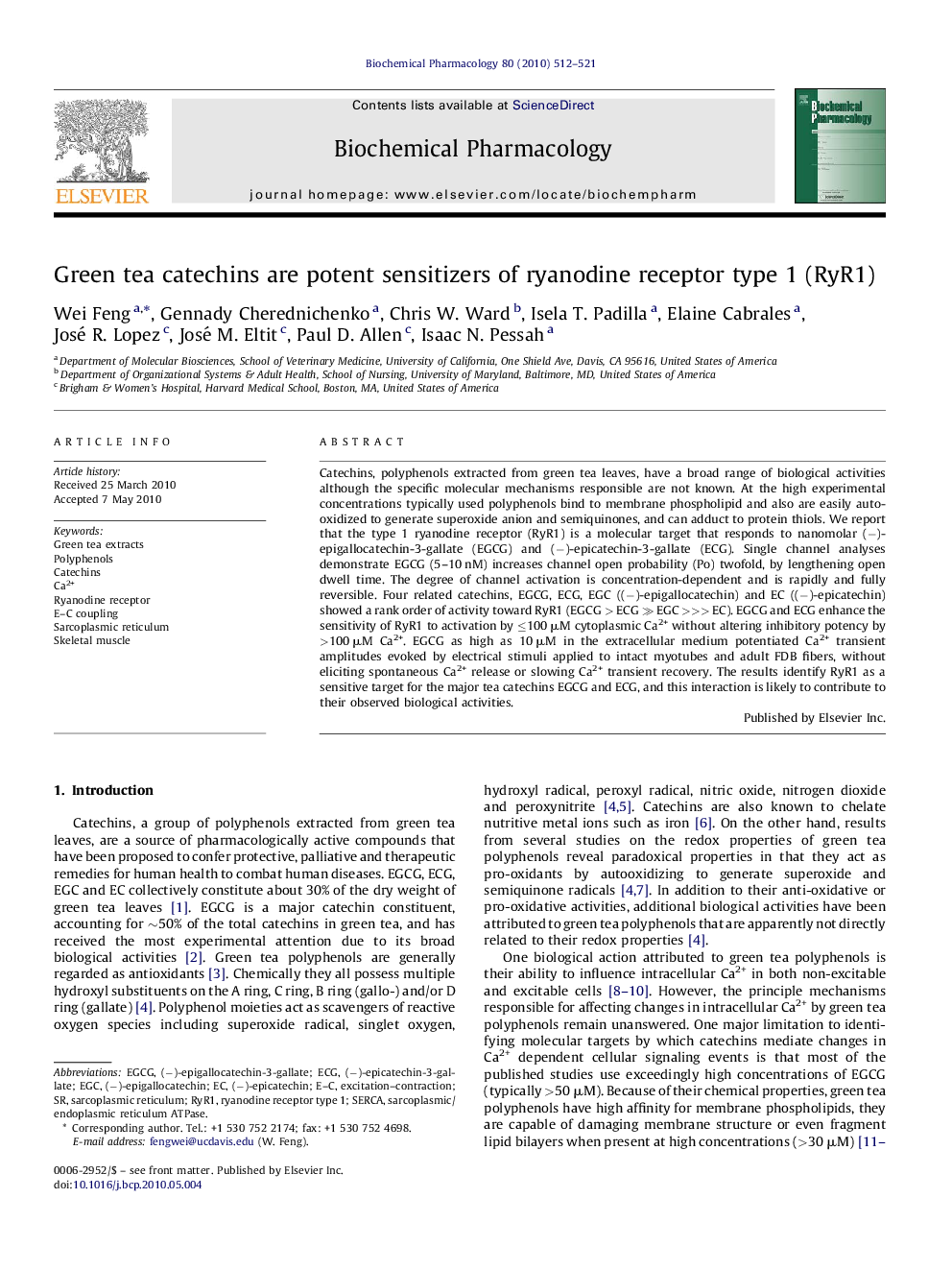| Article ID | Journal | Published Year | Pages | File Type |
|---|---|---|---|---|
| 2513397 | Biochemical Pharmacology | 2010 | 10 Pages |
Catechins, polyphenols extracted from green tea leaves, have a broad range of biological activities although the specific molecular mechanisms responsible are not known. At the high experimental concentrations typically used polyphenols bind to membrane phospholipid and also are easily auto-oxidized to generate superoxide anion and semiquinones, and can adduct to protein thiols. We report that the type 1 ryanodine receptor (RyR1) is a molecular target that responds to nanomolar (−)-epigallocatechin-3-gallate (EGCG) and (−)-epicatechin-3-gallate (ECG). Single channel analyses demonstrate EGCG (5–10 nM) increases channel open probability (Po) twofold, by lengthening open dwell time. The degree of channel activation is concentration-dependent and is rapidly and fully reversible. Four related catechins, EGCG, ECG, EGC ((−)-epigallocatechin) and EC ((−)-epicatechin) showed a rank order of activity toward RyR1 (EGCG > ECG ≫ EGC >>> EC). EGCG and ECG enhance the sensitivity of RyR1 to activation by ≤100 μM cytoplasmic Ca2+ without altering inhibitory potency by >100 μM Ca2+. EGCG as high as 10 μM in the extracellular medium potentiated Ca2+ transient amplitudes evoked by electrical stimuli applied to intact myotubes and adult FDB fibers, without eliciting spontaneous Ca2+ release or slowing Ca2+ transient recovery. The results identify RyR1 as a sensitive target for the major tea catechins EGCG and ECG, and this interaction is likely to contribute to their observed biological activities.
Graphical abstractFigure optionsDownload full-size imageDownload as PowerPoint slide
